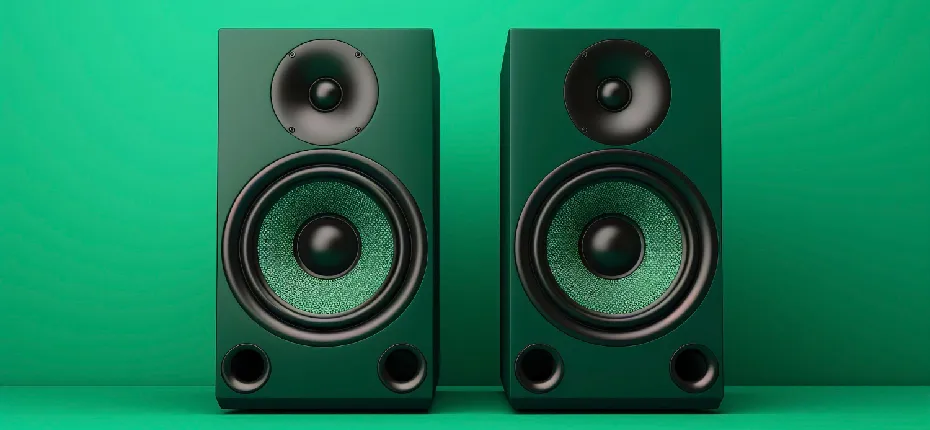Sound System Installation Challenges in UAE High-Rise Buildings: Solutions and Strategies
In the UAE, iconic tall buildings are symbols of modern life. But installing quality sound systems in high-rises has unique troubles. These towering designs with complex shapes can hurt audio quality. Still, residents want excellent sound to enjoy homes. Offices want clear sound for meetings. Public spaces also need good speaker systems. While demand is high, actually setting up flawless sound in tall UAE buildings is hard. Installers face one-of-a-kind issues dealing with impressive heights and elaborate building plans. Careful planning is required to make sure sound is top-notch. In this blog, we will go over the specific difficulties faced with UAE high-rise sound systems. We’ll also provide solutions and strategies to tackle these challenges. The goal is to help audio installers overcome height and design obstacles for superb sound.
Building Regulations and Compliance sound system installation in Dubai
Understanding sound system rules in the UAE
Putting in sound systems in tall buildings in the UAE can be tricky because of local rules. Following the laws and standards is important for safety, dependability, and quality. Learning the specific needs for sound systems in Dubai and other Emirates is the first step to a good project.
Challenges meeting rules in tall buildings
Tall buildings often have stricter rules because of safety issues and affecting neighboring units. This can limit noise levels, equipment placement, and structure changes. Beating these challenges requires really understanding the rules and finding creative solutions that meet both legal and functional needs.
Strategies for following regulations
To ensure you follow the rules, it’s key to talk to local authorities and get the needed permits and approvals. Also, working with experienced sound system installers who know the local regulations well can streamline the process. Customizing solutions that follow the rules but still deliver great sound quality is vital for success.
Acoustic Considerations
The building materials used in tall buildings really impact how sound travels. Sound can easily go through concrete, glass, and steel, causing acoustic issues. Knowing how different materials affect sound is key for good sound system design.
Tall buildings often have large open areas like lobbies and atriums that can have too much echo and sound bounce. Using sound-absorbing materials, diffusers, and acoustic panels can help fix these problems and improve sound clarity.
Working with acoustic experts is essential to evaluate the sound needs of each space in a tall building. Custom solutions, including acoustic treatments, speaker placement, and sound isolation, are vital for getting the desired sound quality.
Wiring and Infrastructure Challenges
Tall buildings have tricky wiring issues, with the need for long cable runs, signal routing, and power distribution. Managing this complexity well is key for reliable and seamless sound system operation.
Many high-rise buildings already have complex systems in place, like electrical, data, and HVAC. Connecting personalized sound systems to existing infrastructure without causing disruptions or interference takes careful planning and skill.
Modern sound system installation in Dubai often use wireless technology and networked audio. Using these innovations can simplify wiring and infrastructure challenges. Also, cable management systems and conduits can help keep the installation neat and tidy.
Aesthetic Concerns
Balancing function and architectural beauty:
High-rise buildings are often celebrated for their architectural beauty. Any sound system installation should blend smoothly with the design. Balancing function and aesthetics requires carefully choosing equipment, concealment solutions, and working with architects.
Hiding equipment for a seamless look
To maintain the visual appeal of high-rise interiors, speakers and equipment must be discreetly hidden. In-wall and in-ceiling speaker systems, concealed subwoofers, and custom cabinetry can ensure a harmonious design.
Working with architects for integrated solutions:
Early collaboration with architects and interior designers is key to seamlessly incorporate sound systems into the building’s design. This proactive approach can produce solutions that enhance both the acoustic and visual aspects of the space.
System Integration and Compatibility
Tall buildings often have complex automation systems that control things like lights, temperature, and security alarms. It’s important that new sound systems are compatible with these existing systems, so everything can still be controlled centrally and work together smoothly.
Sound systems themselves also have many different components – speakers, amplifiers, receivers, smart speakers etc. Connecting all these different parts and making sure they communicate with each other effectively is key to having an easy-to-use system.
Since sound systems in tall buildings usually cover multiple floors, steps need to be taken to ensure seamless operation across all levels. This requires setting up robust network connections, syncing different zones, and having backup plans in place so that the whole system works as one.
Getting all these elements integrated and compatible is crucial for a streamlined, glitch-free experience, and this is provided by sound system installation in Dubai.
Power Distribution and Management
Getting power distributed in tall buildings can be tricky, with different voltage levels and connection points. Planning for steady power supply and surge protection is key to avoid system failures and damage.
Smart power management systems, uninterruptible power supplies (UPS), and power conditioners can help maintain stable power for personalized sound systems. Backup measures can further improve reliability.
Tall buildings need very reliable systems. Having backup components and power sources can reduce downtime and keep sound systems running smoothly without interruption.
Maintenance Accessibility
- Maintaining sound systems in high-rise buildings can be tough because equipment is so high up and hard to reach. Access to speakers, amplifiers, and controls needs to be considered while smart speaker installation.
- Planning the audio video receiver installation of the sound system with maintenance in mind is key. Having equipment lifts, remote monitoring, and maintenance access points can simplify upkeep and reduce downtime.
- Using remote monitoring and diagnostic tools allows proactive maintenance. Technicians can spot and fix issues remotely. This reduces the need to physically access hard-to-reach equipment.
Environmental Factors
- There are certain factors to consider while doing smart speaker installation for high-rise buildings.
Outdoor sound systems on high-rise buildings can be impacted by heat, humidity, and dust. Picking weatherproof equipment and taking protective steps is key for durability. - Using weather-resistant boxes and properly sealing outdoor gear can protect systems from harsh conditions. Regular maintenance and inspections also help equipment last longer.
- Different UAE regions have varying climates. Considering climate factors, like intense heat in some areas, when picking equipment is important for long-term durability.
Customization for Varied Spaces
- High-rise buildings have diverse spaces like apartments, offices, shops, and more. Sound systems need to be tailored to work well in each unique area.
- Every space has its own sound needs. Conference rooms need clear voice pickup. Lobbies should allow easy announcements. Common areas may require adjustable music. The sound system must address each space’s needs.
- Solutions should be customized for each space. Conference rooms may need multiple mics and speakers for clear conferencing. Lobbies might need a zoning system for announcements. Common areas can use smart streaming and volume controls to customize music.
Case Studies and Success Stories
When installing sound systems in high-rise buildings, home sound system installation in Dubai will showcase examples of successful real-world installations and the best practices learned from them. These case studies provide valuable insights into the customized solutions and techniques that have worked effectively in different tall building environments and spaces.
Future-Proofing Strategies
- It’s important to think ahead about what new sound system technology might be available in the future. This could be things like smarter voice controls, wireless speakers, or new audio formats. Anticipating these advancements can guide current designs.
- When installing sound systems now, they should be set up in a way that makes future upgrades simple. This could mean using modular components, leaving accessible connection points, and minimizing built-in obstructions. Planning ahead makes enhancements cheaper and easier down the road.
- Staying aware of the newest trends and innovations in audio tech is key. This can mean reading industry publications, attending trade shows, or speaking with vendors about what’s coming. Knowing what is emerging can inform designs and prepare systems for the future.
In Summary
Creating excellent sound experiences in modern high-rise buildings requires careful planning, collaboration with experts, and tailored solutions for each unique space. When thoughtfully designed with both present needs and future flexibility in mind, sound systems can seamlessly blend into their environments while providing top-notch speech intelligibility, music playback, and accessibility. Keeping current with ongoing innovations will allow high-rise sound systems to offer superb quality and user experiences now and in the years to come.







